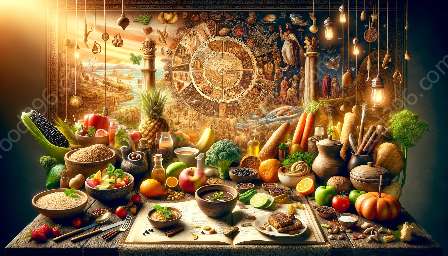The Middle Ages, often referred to as the Medieval period, spanned from the 5th to the 15th century and were a time of great social, cultural, and culinary transformation. While the traditional perception of Medieval food usually involves meat-centric dishes and heavy meals, the history of vegan cuisine in the Middle Ages tells a different and often overlooked story.
The Roots of Veganism in the Middle Ages
Vegan cuisine in the Middle Ages was heavily influenced by the available agricultural practices, cooking techniques, and the religious and cultural beliefs of the time. One key factor that shaped veganism in this era was the rise of monasticism and the development of self-sustaining monastic gardens. Monasteries played a pivotal role in developing and preserving plant-based recipes, as their lifestyle and spiritual beliefs often promoted simplicity, sustainability, and compassion for all living beings.
Culinary Practices and Ingredients
During the Middle Ages, plant-based diets were more prevalent than commonly believed, especially among the lower classes. The majority of the population relied on grains, legumes, fruits, and vegetables as key components of their daily meals. Techniques such as boiling, stewing, and roasting were commonly used to prepare hearty and nourishing vegan dishes. Ingredients like barley, lentils, turnips, and various herbs and spices were widely used to create flavorful and substantial meals.
The Influence of Global Trade
Despite the geographical limitations of the Middle Ages, trade routes facilitated the exchange of culinary knowledge and ingredients, contributing to the diversity of vegan cuisine. The Silk Road, for instance, enabled the introduction of new plant-based foods and spices from distant lands, enriching the culinary landscape of the Middle Ages.
Religious and Cultural Influences
Religious observance heavily influenced dietary choices during the Middle Ages. Both Christian and Islamic traditions emphasized periods of fasting and abstaining from animal products, leading to the development of elaborate vegan dishes to accommodate these dietary restrictions. Moreover, the teachings of prominent figures such as St. Francis of Assisi, who advocated for compassion towards animals and the environment, further reinforced the principles of veganism and sustainability in culinary practices.
The Rise of Vegan Cuisine in the Middle Ages
Over time, vegan cuisine in the Middle Ages evolved into a rich tapestry of flavors and techniques, often showcasing the creativity and resourcefulness of cooks and chefs of the era. Plant-based stews, soups, and innovative grain-based dishes became culinary staples, celebrated for their nourishing qualities and ability to sustain individuals through challenging times.
Legacy and Modern Perspectives
Exploring the history of vegan cuisine in the Middle Ages provides valuable insights into the diverse culinary heritage of this period. It sheds light on the resourcefulness of ancient cooks, the influence of cultural and religious practices, and the sustenance provided by plant-based foods. Understanding the roots of veganism in the Middle Ages contributes to a more nuanced appreciation of historical dietary practices and their enduring impact on modern-day vegan cuisine.

